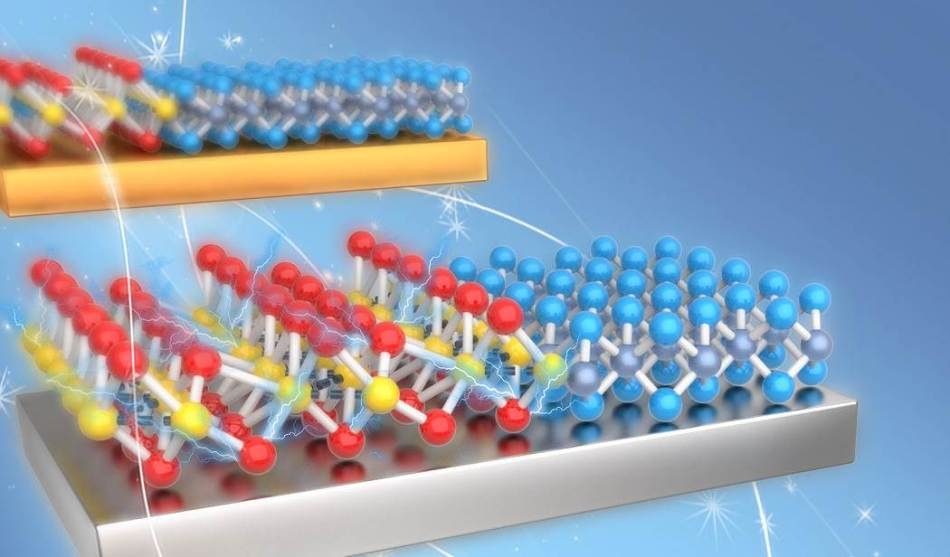Feb 13 2019
The mechanism involved when transition metal dichalcogenides on metallic substrates change from the semiconducting 1H-phase to the quasi-metallic 1T’-phase has been discovered by a team of National University of Singapore (NUS) researchers.
 Molecules of monolayer molybdenum disulfide (MoS2) and tungsten diselenide (WSe2) on top of a metal substrate. (Image credit: National University of Singapore)
Molecules of monolayer molybdenum disulfide (MoS2) and tungsten diselenide (WSe2) on top of a metal substrate. (Image credit: National University of Singapore)
Two-dimensional transition metal dichalcogenides (2D-TMDs) such as monolayer molybdenum disulfide (MoS2) are atomically thin semiconductors wherein a layer of transition metal atom is inserted between two layers of chalcogen atoms, in the form MX2. They can survive in both a semiconducting 1H-phase and a quasi-metallic 1T’-phase, with each having a diverse crystal structure. The 1T’-phase is especially stimulating as theoretical predictions reveal that holds the promise to be used in less conventional applications, such as hydrogen evolution reaction catalysts and supercapacitor electrodes. However, the quantity of 1T’-phase 2D-TMDs that can be gotten by transforming them from the 1H-phase through a phase transition process not much. This potentially restricts the use of such innovative materials for a wide variety of applications.
A study team led by Professor Andrew Wee from the Department of Physics at the NUS’s Faculty of Science has discovered that while various 2D-TMD materials have their own inherent energy barriers when changing from the 1H to the 1T’ structural phase, the use of a metallic substrate with higher chemical reactivity can considerably boost the 1H- to 1T’- phase transition yield. This is an easy and high-yielding technique to acquire 2D-TMD materials in their 1T’ metallic phase. When the 2D-TMD material is positioned in contact with the metal substrate, such as silver, gold, and copper, electric charges are moved from the metal substrate to the 2D-TMD material. Moreover, it deteriorates the bond strength of the 2D-TMD structure greatly, and increases the scale of the interfacial binding energy. This, in turn, raises the vulnerability of the 1H-1T' structural phase transition. Therefore, this improved interfacial hybridization at the interface of the two materials makes the 1H-1T’ structural phase transition a lot easier to accomplish.
The NUS study team combined several experimental methods and first-principles calculations in their research effort. These include high-resolution transmission electron microscopy, optical spectroscopies, and density functional theory based first-principles calculations to identify the phase variations—both 1H- and 1T'-phases—of the 2D-TMDs in the samples.
This research offers new insights into the impact of interfacial hybridization influencing the phase transition dynamics of 2D-TMDs. The results can potentially be used in a model system for the regulated growth of 2D-TMDs on metallic substrates, making possibilities for new 2D-TMDs-based device applications.
The controllability of the semiconductor to metal phase transition at the 2D-TMD and metal interfaces can enable new device applications such as low contact resistance electrodes.
Andrew Wee, Department of Physics, National University of Singapore (NUS).